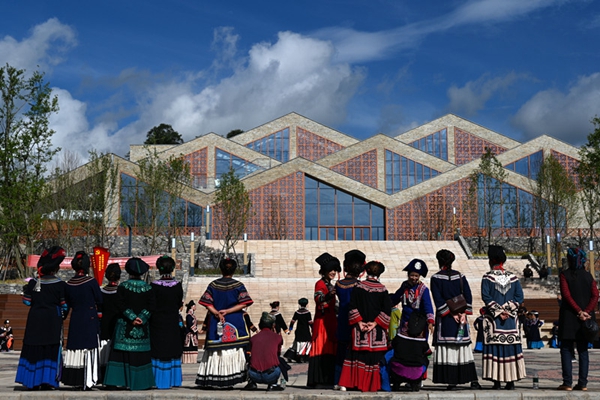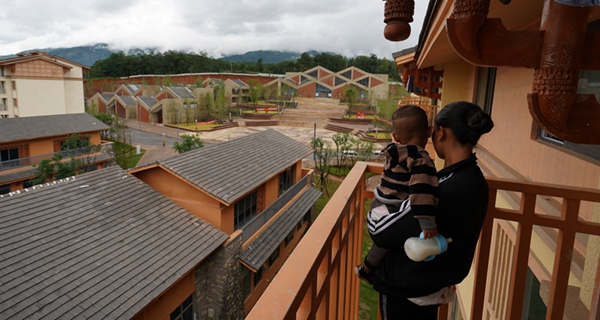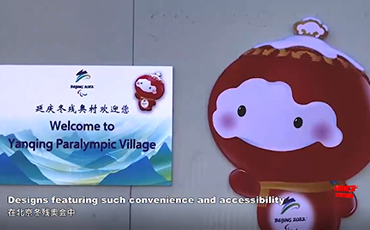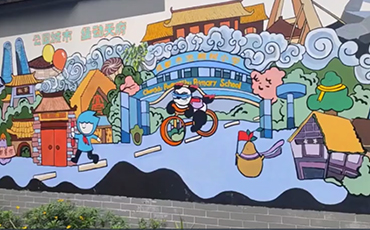Sichuan: From poverty eradication to rural vitalization
Chinese Premier Li Keqiang announced that all remaining poor rural residents, totaling 5.51 million in early 2020, were lifted from poverty by the end of last year, as were all of the country's remaining 52 poor counties, when delivering the Report on the Work of the Government on March 5. Sichuan province in southwest China, once a major battlefield for poverty eradication, contributed significantly to the achievement.

Local residents in Sichuan shake off the shackles of poverty by moving into new houses from inhospitable places. [Photo/Sichuan Daily]
Of the total 183 county-level regions in Sichuan, 161 were plagued by poverty, and 45 of them struggled in extreme poverty. Last year, 6.25 million poor people in 11,501 villages of 88 impoverished counties rose above poverty.
Abuluoha, once "the poorest corner in China," was among the 11,501 villages. In Yi ethnic language, "abuluoha" means "a deep valley in the mountain" or "an off-limit place." It is nestled in a valley along the Jinsha River in Butuo county, Liangshan Yi Autonomous Prefecture. The geological location made the village once inaccessible by modern means of transportation. Villagers had to climb over the mountains and cliffs or use ziplines to cross rivers to see the outside world.
Changes came in 2019 when Sichuan vowed to make all villages accessible with paved roads by the end of the year. In June, engineering vehicles arrived in Abuluoha.
Construction of the merely 3.8-km-long road to the village was a daunting challenge as most of it was close to steep cliffs. Apart from leading experts, Sichuan managed to make the Mil Mi-26 heavy transport helicopter come to help. "We were astonished to see an excavator walking out of the belly of an aircraft," recalled a villager who was only 20 meters away from where the helicopter landed.
The completion of the road a year later marked that all administrative villages in Sichuan were became accessible by motor vehicles. Thanks to the road, local residents bade farewell to poverty, with their incomes growing exponentially.
Ending poverty is not the finishing line, but marks a new start. On February 25, China unveiled the new national administration for rural vitalization to replace former State Council Leading Group Office of Poverty Alleviation and Development. Behind the reshuffle is the historic shift of China's focus on rural wok. Sichuan has already made moves to vitalize the rural areas.
Industrial prosperity is key to China's rural vitalization strategy. As an agriculture-based province, Sichuan started from accelerating the pace of agricultural modernization. So far, Liangshan has planned to build 118 modern agricultural industrial parks to provide jobs to more than 80 percent of former impoverished households.
Farmers in Sichuan's Dayi County now do farm work on "cloud." Zhu Lisha, a local farmer, said all the work can be finished on her mobile phone. By clicking an app icon, she gets into a map of her farmland. The app features four sections, namely agricultural means of production, farm work, harvest and finance. "You can place an order on the phone and have a special team to do the job," Zhu said, adding that it is even unnecessary to go to the farmland to get the work done.

A woman and her kid in their new home. [Photo/Sichuan Daily]
Another part of Sichuan's rural vitalization strategies is digital countryside construction. In 2020, Tibetan heartthrob Ding Zhen went viral online, making his hometown Litang County in Garze rise to fame overnight. Hanfan Village in Litang used to face serious desertification. In 2016, the village started to combine environmental restoration with tourism development on a trial basis by planting drought-resistant flower species on a land measuring 53.3 hectares in area. Beside the ocean of flowers, a 13.3-hectare prairie-themed resort was built. While preserving the ecology, the flower farm and prairie-themed resort brought tourism incomes to local residents.
In the future, Sichuan's focal efforts in vitalizing the rural areas will include advancing reforms of the collective property rights system, boosting new-type rural collective economy, exploring sustainable sources for farmers' incomes, promoting cooperation in agriculture, further modernizing the industrial and supply chains of agricultural industrial parks, expanding the use of new technologies and equipment in agriculture, and improving the environment in rural areas.







